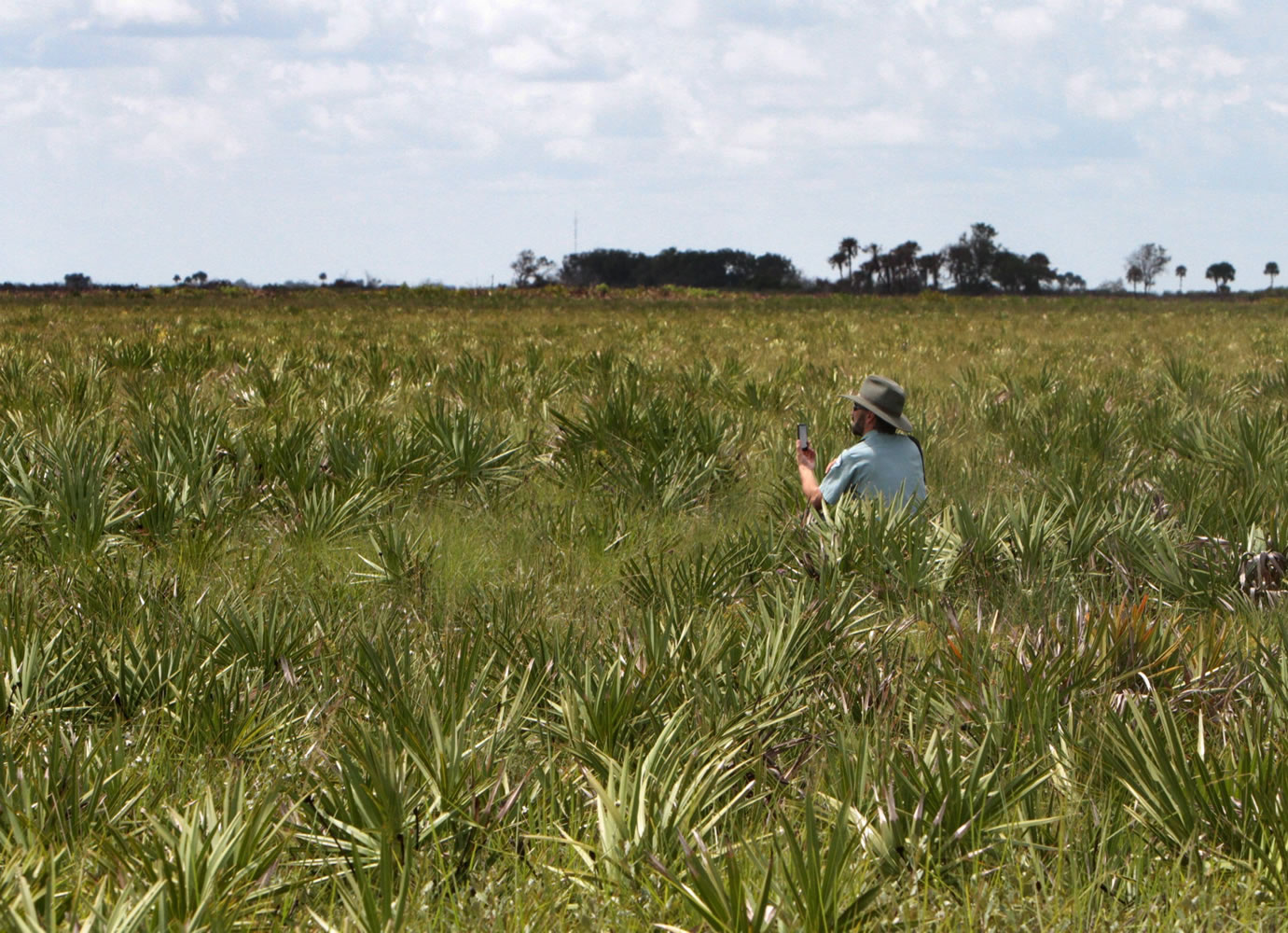ORLANDO, Fla. — When young Florida grasshopper sparrows leave home, they simply pop out of their nest, hidden on the ground, and walk off into the wild — still unable to fly.
Where the endangered birds go from there, and how many survive to produce their own young the following season, are mysteries that biologists urgently want to solve. If the youngest birds aren’t faring well, then saving the species from extinction may require a risky, last-ditch measure: capturing most of the remaining sparrows in the hope they’ll multiply in captivity.
“It’s a bird that doesn’t give up its secrets easily,” said Erin Ragheb, a Florida Fish and Wildlife Conservation Commission scientist.
Of the few hundred surviving Florida grasshopper sparrows, nearly all are clinging to existence on state conservation land in Osceola County about 50 miles south of downtown Orlando.
Ecologists think they are the most endangered bird in North America. Central Florida was also home to the last bird to slip into extinction in the U.S.: the dusky seaside sparrow, which vanished in the late 1980s.
The effort by state and federal agencies and private conservation groups to bring Florida grasshopper sparrows back from the brink has recently accelerated. But it has also had to return to the essentials of the birds’ existence: where they live, how many are born every year and what has caused them to plummet in numbers during the past decade. It’s a race against time to learn enough about the bird to make a difference in its fate.
By comparison, troubled birds such as the California condor, bald eagle and scrub-jay are at least readily found and observed in the wild. But the grasshopper sparrow survives on its ability to remain elusive.
The few remaining birds live in vast prairies of knee-high grasses and shrubs, spending very little time above the vegetation, exposed. The bird’s scientific name is Ammodramus savannarum floridanus; “ammodramus” is Latin for “sand runner.”
“Sometimes I feel like I’m studying mice,” said Ragheb, who noted that only male sparrows emerge from the dense ground cover. “Females are almost exclusively on the ground and essentially invisible.”
Because the small, brown birds are so rare and secretive, virtually nobody other than trained and patient biologists ever sees them. And their nests are even harder to find.
Ragheb pointed out a nest that was active earlier this year but has since been abandoned. It was about the size of a baseball, with an opening smaller than a golf ball, and was made of finely woven grass that blended perfectly with the thick grass growing around it.
The nest’s only defense is to remain hidden from a long list of predators, including deer and turtles, that eat sparrow eggs.



